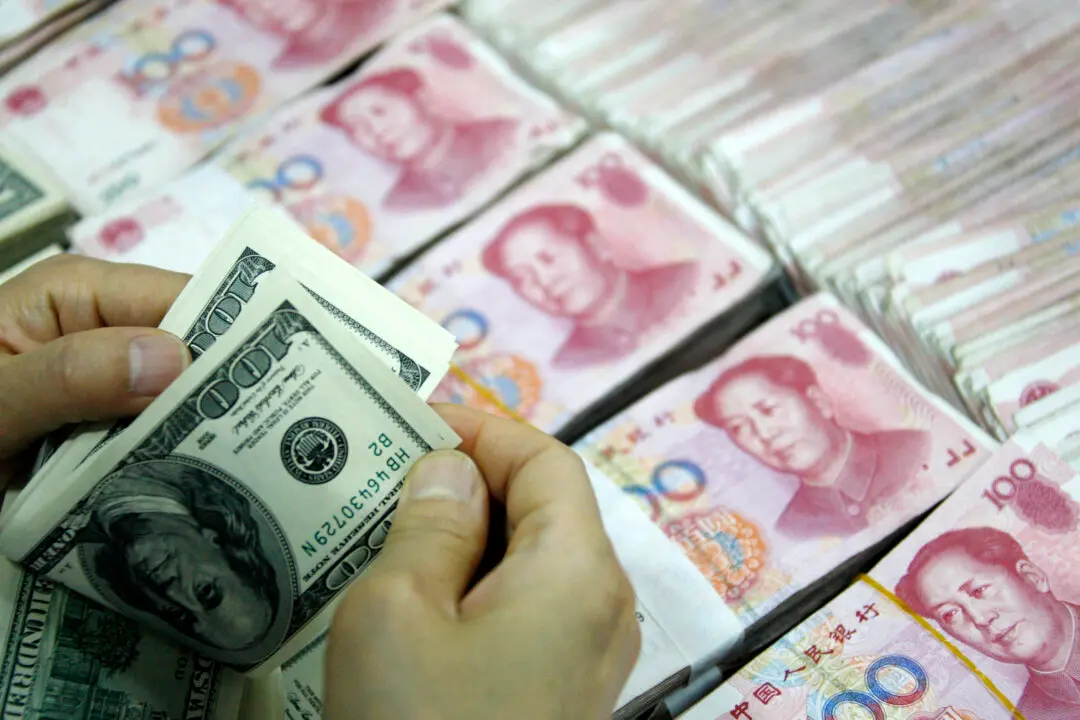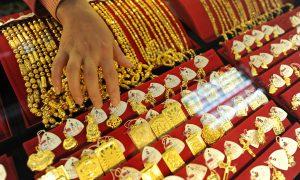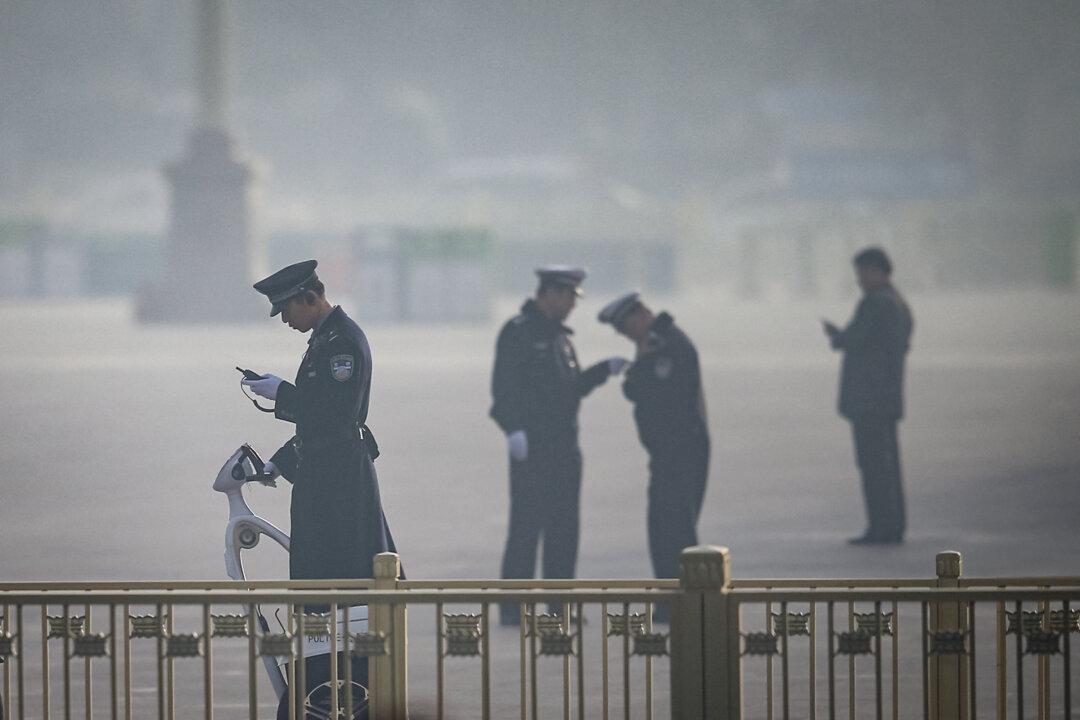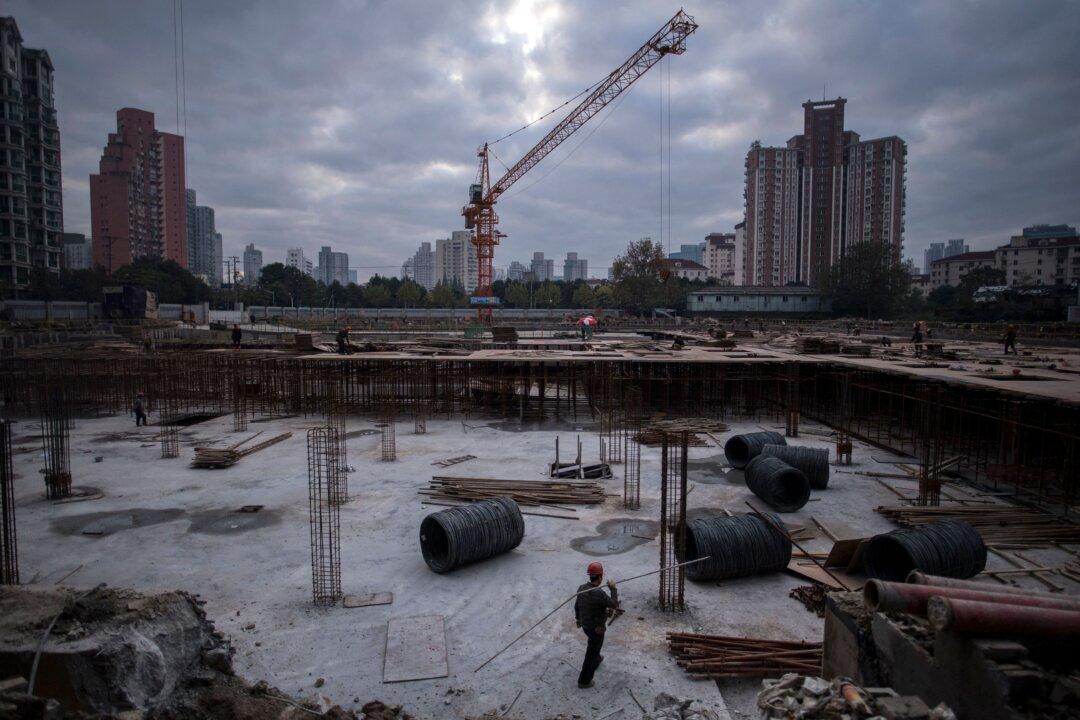China’s economy is heading toward further decline. Although the Chinese Communist ruling Party has come up with a 5.2 percent GDP growth rate through a fudging method of slashing the previous year’s output, in U.S. dollar terms, the nation’s economy has met negative growth for the first time in more than two decades. Some economists even deduced that the Chinese yuan has fallen to over 1:22 against the U.S. dollar.
On the “Pinnacle View” program, Wu Chia-lung, macroeconomist and Taiwan AIA Capital lead economics researcher, suggests there is a view in economics that the exchange rate of the Chinese yuan against the U.S. dollar has exceeded 1:22 and explains how the result comes out through an algorithm.
This concept does not come from exchange rate theory related to international capital flows; instead, it comes from the purchasing power parity, a coefficient of equivalence between currencies based on different price levels in each country, according to Mr. Wu.
This price level refers to the transaction price for a unit of GDP: the ratio of M2 (broad money supply) to GDP.
If calculated with the current exchange rate of 7.2, China’s incremental currency issuance in 2023 was reportedly $40 trillion, double the U.S.’s issuance worth $20 trillion.
China’s GDP was reportedly $17.8 trillion, 64 percent of the U.S.’s $28 trillion.
“[China’s] money issuance is twice that of the U.S., and GDP is 0.64 that of the U.S. So, two divided by 0.64 yields 3.125, and then multiply exchange rate 7.2, we can get 22.5, which means that $1 can theoretically exchange for 22.5 Chinese yuan. This reflects the development of the U.S.-China competition in 2023.”
“As commonly known, there has long been lots of hype around the Chinese side’s GDP, so RMB should depreciate more.”
Yuan Exchange Rate Cannot Reflect China’s Real Economic Status
Guo Jun, the editor-in-chief of The Epoch Times’ Hong Kong branch, argued on the “Pinnacle View” that China is a country with a large degree of government control, “Basically, the more government control there is, the less applicable the exchange rate formula of economic theory may be.”The yuan to U.S. dollar exchange rate could be reckoned around 1:22 when economists use theories mainly measured by the volume of currency issued, the national public debt, and the total volume of imports and exports, said Ms. Guo, while underlining that it can be only held under certain assumed preconditions, such as the complete liberalization of the currency, no governmental intervention, and the free flow of capital.
China, obviously, is not the one that can meet these preconditions.
Using an example to support her view, Ms. Guo continued, “In the 1980s, the U.S. dollar was about 1:2.5 against the Renminbi, which did not mean that China’s economy performed well at that time; on the contrary, the country was in poverty. The Chinese Communist Party (CCP) contained entirely and tightly foreign currencies, so the official exchange rate did not have any significance for the general public and enterprises.”
“China now has the largest foreign exchange reserves, amounting to $3,000 billion. It is also one of the countries with the most stringent foreign exchange control in the world, and this control is subject to changes and adjustments as per the CCP’s policies. That is to say, if the authorities consider it urgent to adopt more stringent control measures, it may even go back to the 1980s when foreign exchange was thoroughly controlled.”
“Foreign exchange is fully regulated, meaning that all money in and out of the account is frozen, and nobody can trade with you.”
In Ms. Guo’s view, the exchange rate, in essence, is the price at which one currency can be used to buy another. The price reflects the supply and demand relationship, one of the principles of the market. “However, if there is price control and monopolization, the price may not necessarily reflect market dynamics. Therefore, we can see that the yuan exchange rate, whether onshore or offshore, does not reflect the relationship between supply and demand.”
For example, the black market exchange between the U.S. dollar and the Chinese yuan peaked at 1:6 or even 1:12 in the 1980s, which means that the black market price can be counted as one of the most critical indicators other than the officially announced 1:2.5.

Summarizing the CCP’s foreign exchange controls over the past several decades, Ms. Guo noted that when China was approved to join the World Trade Organization (WTO) at the end of 2001, one of its commitments made by the CCP was to deregulate capital projects in 2015 and to deregulate them in 2016 entirely. However, the CCP broke its promise. Generally speaking, in 2016, the governmental control over foreign exchange was relatively loose, but after that, it became more and more stringent. The CCP first scrutinized domestic enterprises’ outbound investment, then imposed various technical restrictions on foreign enterprises that pulled capital out of China, and then curtailed the use of foreign exchange by individual residents, with the limits of annual exchange of only $50,000.
“Hong Kong people often use water to describe the money: water flows to the lower part. Similarly, the money runs toward low-cost, low-risk places. So, the serious development of capital outflow shows higher risk in the country, along with increasingly higher asset cost, resulting from political factors, not just economic aspect.”
Consequences of Devaluating the Yuan
On the “Pinnacle View,” Mr. Wu pointed out that from past experiences, the yuan’s sharp fall would bring two impacts on the global economy. The first is China’s export deflation; imports from China become relatively cheap for other countries. The second is the mobility of international capital motivated by a psychology of anticipation over yuan depreciation, demonstrated in global capital fleeing from the yuan and foreign exchange reserves of China’s central bank being heavily hit.In this case, the Chinese central bank may have two options, said Mr. Wu, “One is to defend the exchange rate, that is, to throw out foreign exchange reserves to defend the exchange rate and avoid [yuan] depreciation. The other is to defend the foreign exchange reserves, hold the foreign exchange reserves, and leave the yuan to depreciate. Whatever these two countermeasures, the central bank will be left in limbo in balancing between them.”

Mr. Wu mentioned a notorious interest rate rise schemed by the CCP in 1994. “From February 1994 to February 1995, the Chinese official benchmark interest rate rose to 6 percent, a rise of 12 points in a year, and that was a very famous interest rate rise called the Great Bond Massacre, which led to a massive fall in the value of bonds.”
“The month before the U.S. Fed raised interest rates, in January 1994, China had already felt a vast amount of capital withdrawing from the emerging markets, and as a result, the yuan dropped sharply from 1:5.8 to 1:8.7, about 50 percent of devaluation in January one month, What was the impact of this? China’s export competitiveness rose dramatically, snatching all the export opportunities from the Southeast Asian export markets.”
“At that time, Southeast Asian countries led by the ‘Four Little Dragons’—Singapore, Hong Kong, South Korea, and Taiwan—were going to enter the international market. In the end, they were intercepted by China [due to the sudden yuan depreciation]. Therefore, the trade surplus of Southeast Asia was reversed, and finally, the capital began to flee. Then Southeast Asian countries such as Thailand, Malaysia, and Indonesia were trapped in financial turmoil.”
“After the sharp depreciation of the yuan, there will emerge a phenomenon dubbed ‘shearing,’ that is, China’s quality assets would be a bargain in the eyes of foreign investors as a result of the sharp depreciation of the yuan. So, foreign investors would flood to ‘harvest’ those high-quality assets. In the future, when the quality assets return to normal prices, foreign investors will make a lucrative profit.”
It can be expected that “Some international financial crocodiles are waiting for the yuan to dive so that they can pick up bargains in China.” Mr. Wu said.
Considering another angle, Shi Shan, Epoch Times senior editor and chief writer, expressed on the “Pinnacle View” that “I’m afraid this depends on China’s political environment; if the society is unrest, no one dares to go to pick up bargains there.”
He believes that once there is a large-scale fluctuation of the yuan exchange rate like that in the 1990s, the impact may be even more significant than before, “it is likely to affect many aspects of mainland China, not only the economy, the Chinese individual wealth but also the entire political and social structure.”







